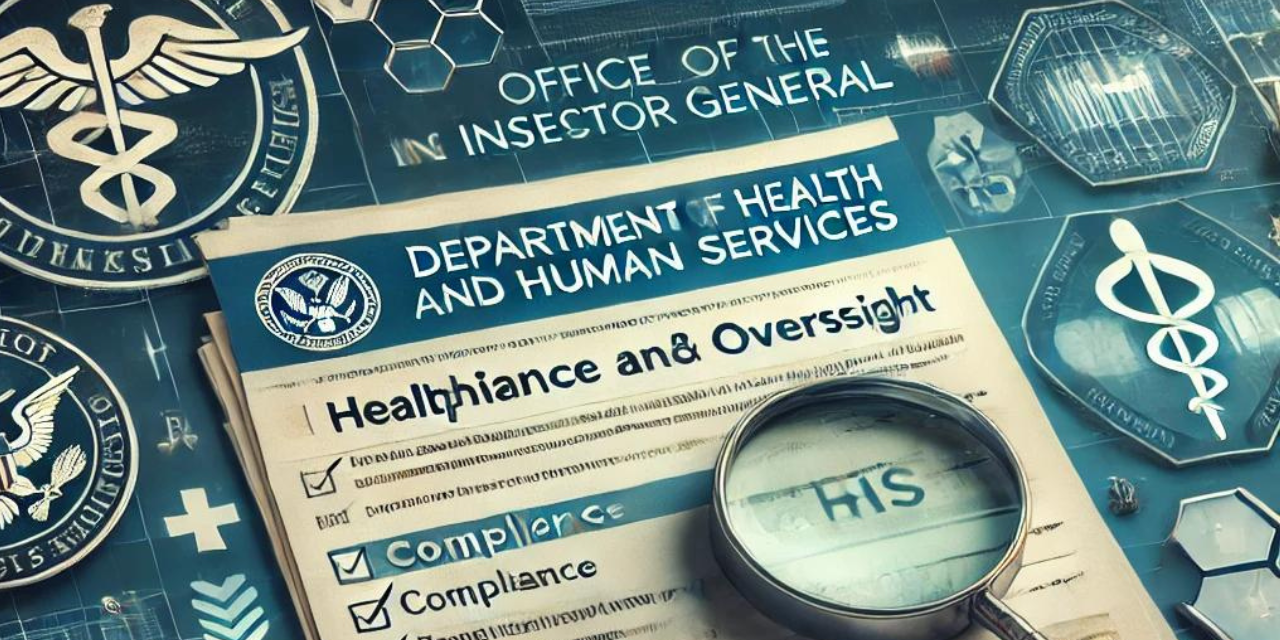
What Every Chiropractic Physician Should Know About OIG Compliance

The Office of the Inspector General (OIG), which is part of the Department of Health and Human Services (HHS), is an agency that works to prevent fraud, waste, and abuse (FWA) in government programs. It focuses on Medicare and Medicaid, as well as about 100 other HHS programs, which accounts for about $2 trillion of government resources and spending. The OIG employs about 1600 people, mostly auditors, investigators, and evaluators with expertise in law, technology, cybersecurity, health policy, data analytics, and medicine. They work, along with other agencies, such as the Department of Justice (DOJ), to improve efficiency in government programs, recover misspent funds, and educate and enforce regulations.
In 2023 they recovered $3.44 billion, participated in 707 criminal actions, 746 civil actions, and excluded 2,112 individuals or entities from participation in federal programs. They put together a Work Plan that is updated quarterly, and sometimes it includes focus on issues that are relevant to chiropractors. They publish reports of some of their past investigations, and there are 14 from the past 20 or so years that are very specific to chiropractic. These reports contain valuable information about what are common compliance issues with chiropractic clinics. They are a good place to start if a clinic wants to identify risk areas that have gotten other DCs in trouble.
Back in 1998, the OIG began to provide compliance program guidance (CPG’s) specific to various segments of the healthcare industry. The purpose was to support stakeholders in their efforts to self-monitor compliance with federal laws and regulations relevant to the OIG’s scope of influence. Some of these regulations include:
- The Federal Anti-Kickback Statute
- Physician Self-Referral Law
- False Claims Act
- Civil Monetary Penalties Authorities
- Exclusion Authorities
- Criminal Health Care Fraud Statute
- HIPAA Privacy and Security Rules
In order for a chiropractic office to demonstrate compliance, they would need to become familiar with each of these laws and put policies and procedures in place to minimize risk and show that they are actively monitoring themselves through a compliance plan. This may seem daunting, but the OIG has outlined seven elements of an effective OIG compliance plan in their program guidance to help entities fulfill their commitment to comply with all the applicable laws related to federal health care plans. These elements include:
- Written Policies and Procedures
- Compliance Leadership and Oversight
- Training and Education
- Effective Lines of Communication with the Compliance Officer and Disclosure Programs
- Enforcing Standards: Consequences and Incentives
- Risk Assessment, Auditing, and Monitoring
- Responding to Detected Offenses and Developing Corrective Action Initiatives
Each of these elements is explained in detail, with modifications for smaller entities, such as chiropractic offices, in the OIG Compliance Program Guidance that was updated and clarified in 2023. A compliance plan, which includes all these elements, and is relevant to a chiropractic office, may take some time to pull together. Various consultants can put one together with you (not really for you, since it needs to be very customized), for a fee, but with the resources available from the OIG and a little effort, a provider can pull one together him or herself. Illinois Chiropractic Society members can access a Compliance Plan Template here that should be edited with your practice specifics. Additionally, ICS members have free access to this information with guided steps through Statusfi.
One of the most important parts of this compliance plan is a Code of Conduct, which outlines the clinic’s mission, goals, and commitment to comply with Federal and State laws. In a chiropractic office, all the clinicians and team members should sign an agreement upon joining the organization, stating that they will adhere to the standards in the Code of Conduct.
Once in place, the office will enjoy significantly reduced liability and risk, gain increased credibility, and enhance efficiency in operations. An office which follows a plan is much less likely to bill for a Chiropractic Manipulative Treatment when the patient wasn’t even in the office that day, or bill Medicare for maintenance visits as if they are active care. Though this guidance technically only applies to federal programs, private payers most certainly will look more favorably upon providers who have an active compliance plan in place. While the creation of an OIG compliance plan is not a simple task, it is essential for any healthy chiropractic office.
Downloadable Form
Additional OIG Compliance Resources
Part 1: The False Claims Act for Chiropractic Physicians
Part 2: Anti-Kickback Statute for Chiropractic Physicians
Part 3: Self-Referral Law for Chiropractic Physicians
Part 4: Exclusion Authority Requirements for Chiropractic Practices
Part 5: Civil Monetary Penalties, OIG, and the Chiropractic Practice

















